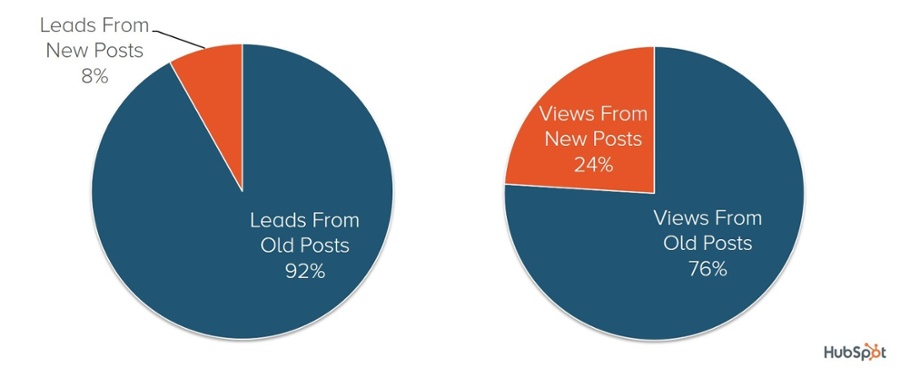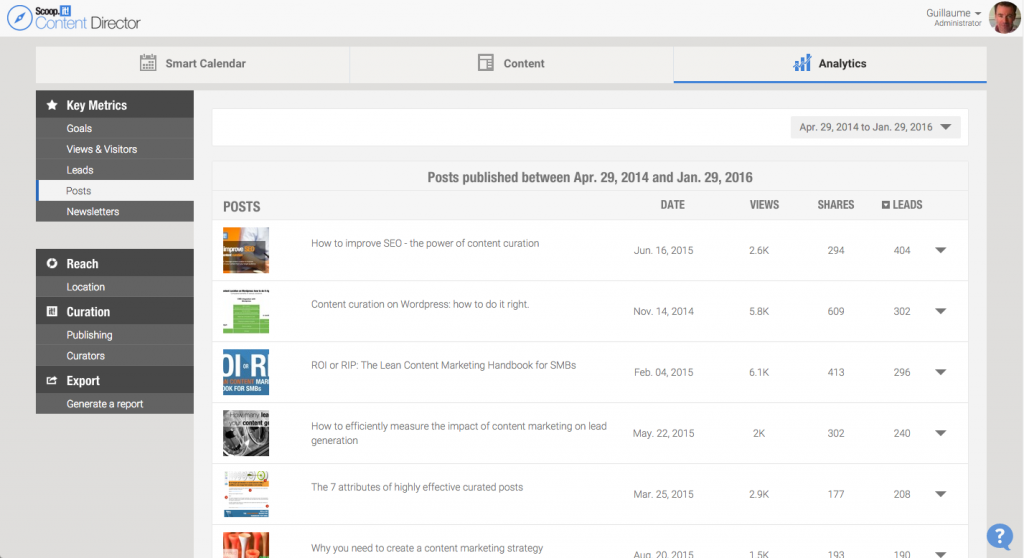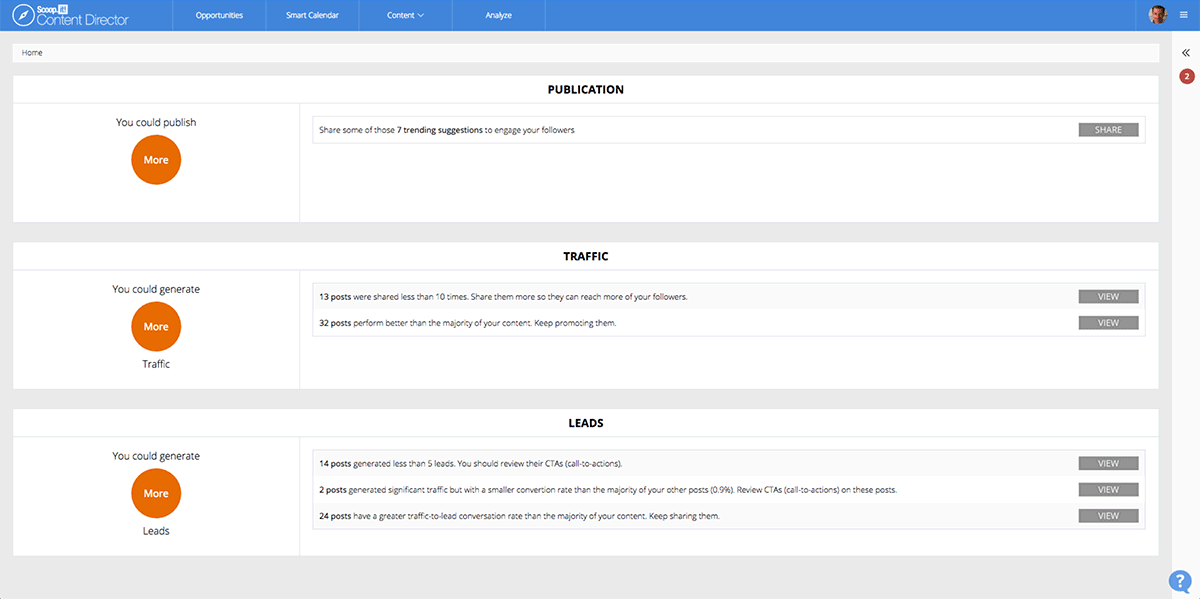
We all want more results from our content. Especially now, when word is out that simply publishing more content may not help as much as we thought.
Trouble is, how to get those extra results? You can optimize for more shares, of course. Test your headlines, your lead generation offers. But after you’ve done all that, the only thing left is the deep dive: a full-scale content audit.
What’s a content audit anyway?
Well, it is kinda like a tax audit, but without the inscrutable forms or the fear of penalties. One way a content audit is like a tax audit is how you review everything you’ve done over a period of time (usually in the last year or six months). With a content audit, you look to see what’s worked and what hasn’t, and what you could do better.
If you just wrinkled up your nose while reading that, you’re not alone. Most of us acknowledge the need for a content audit, but the enthusiasm for doing days of in-depth analysis is usually pretty low. Especially if you’ve still got to keep up with a content production schedule, meet your lead gen goals, and get ready for that huge conference that’s coming up so fast.
This resistance is why content audits often fall to the bottom of the to-do list. Which is a shame. There’s valuable, actionable information to be had from doing a content audit. We all know it. But it’s just too much of a struggle to get it to. But what if it wasn’t such a struggle? What if you could 80/20 the whole content audit, getting the meat of the information you needed, without too much time lost? What if you could get that audit done in maybe a day, instead of a week or two weeks?
Now, I know even a day is a pretty big investment. Carving out a day to do anything can be hard. So let’s give you some incentive.
A content audit pep talk
As you know, every time we publish a new piece of content, there’s a spike in traffic and leads. Then it tapers off after awhile.
But how much activity keeps happening after that?
Ends up, there’s a lot. In fact, you’re probably getting the bulk of your results from previously-published content – not from this week’s post. That’s what HubSpot discovered when they did a content review:

As you can see, they were getting 92% of leads and 76% of their traffic from older posts. They defined “old” posts as anything older than 30 days.
This is the kernel of why we do content audits. Because while it’s good and necessary to get the most results out of freshly-published content, the real engine of your business results comes from that backlist of old posts. This is also part of why it takes time to get traction with content marketing.
So instead of fixating on your just-published content, what if you focused on your older content? Here’s what a 10% improvement to that backlist could get you, versus what a 10% improvement to your just-published content could net.
Say you’re getting 100 leads a month:
| % of leads | # of leads | After 10% optimization | Improvement | |
| This month’s content | 8% | 8 | 9 leads (rounded up) | 1 additional leads |
| Older content | 92% | 92 | 101 leads | 9 additional leads |
In other words, optimizing your old content will get you nine times the results.
Would you like to 9x your content marketing results? I bet you would. So here’s how to get that content audit done without it taking a week. Here, for your optimization pleasure, is how to do a content audit in one day:
1. Ask yourself what you want to know after you’ve completed this audit
Before we talk metrics, run Analytics reports, or count shares, it’s essential to know what you want. Because this isn’t going to be an exhaustive, weeklong audit, you’ll need to know what you want from it going in.
I bet you’ve already got several thoughts on this. But give yourself a few days to consider what you might want to find out. Ask your boss. Ask your team.
You’ll probably have enough time to answer at least 1-3 basic questions. Things like:
- Short vs. long-form content? Should we be publishing short (500-700 words) or long (1,000 words or more) content?
- Which 30 pieces of content are generating the most leads?
- Which 30 pieces of content would probably give us the best returns if we optimized them?
- What content themes should we be focusing on for the next 3-6 months?
- Do we have enough (and effective) content for each one of our personas, and each phase of those personas’ buying journeys?
- What’s the best day for us to publish?
- How well are our call-to-actions (CTA, aka “lead generation offers”) working?
You get the idea. Pick 1-3 questions that will really help you do your job better, then dedicate your content audit day to answering those questions.
Because this is a condensed audit – and because you’re reading a blog post, not an eBook – I’m going to show you how to answer three basic questions about your content. I’ll also give you brief instruction on how to adapt those instructions to answer different content questions.
2. Decide which 3-5 metrics are really important to you
Our one-day audit isn’t going to give us enough time to get lost in content metrics, so you’ll need to focus on what’s really important. You need to know what quantitative measures you’re referring to when you say a piece of content “did well”.
May I suggest focusing on leads? And after that, lead quality (or lead value, if your system is sophisticated enough to add monetary values to each action). This will immediately hone you in on actual business results. This makes executives happy, and is good to have when budget negotiations or raises come up.
That said, many companies are doing content marketing to build brand awareness. So you don’t want to leave that out either. Simple share counts work great for this. So does inbound traffic.
That brings us for four metrics so far:
- Total leads
- Lead quality or value
- Total social shares
- Traffic (aka “page views”)
That’s a nice lean list, but if you want to add one more metric, go ahead. Every business is a little different, so we have to account for that. But please – don’t add more than one metric. Otherwise you’ll probably need more than one day to assess your content.
You can use a simple content marketing analytics framework like this to help you organize your content framework to convert.
3. Begin analyzing your content to find out which pieces performed best
As mentioned, I’m going to show you how to analyze your content to answer just a few questions. I’ll start with an easy one: “Which 30 pieces of content are generating the most leads?” You’ll be able to use this technique to answer many other questions about your content.
First step with this: Create a list of URLs for every piece of content you’ve published. It may be a long list – if you’ve been doing content marketing for more than 3 years, you may need to trim this roster down to everything you’ve published in the last year. Tools like Google Analytics or Screaming Frog can give you this information. So can a good sitemap tool.
Once you’ve got that list, it’s time to bust out a spreadsheet. You’ll probably want a different spreadsheet for each question you want to answer. Let’s say you want to analyze leads. This is actually a bit trickier than it sounds. That’s because if you compare the lead count for all your posts, you’ll give the older posts WAY more credit.
For example:
| Post URL | Date Published | Leads generated |
| Oursite.com/postA/ | 5/17/13 | 324 |
| Oursite.com/postB/ | 2/5/16 | 40 |
That table makes it look like Post A is crushing Post B. But this isn’t fair, because Post B was only published a few months ago. Post A has had years to accumulate all those leads.
So how to fix this? It’s actually really easy. In Excel, if you subtract one date from another, it will give you a count of the days in between them.
So with trick, we can get a much clearer view of which posts (or any content asset) are performing best:
| Post URL | Date Published | Leads generated | Days since publication | Average leads per day |
| Oursite.com/postA/ | 5/17/13 | 324 | 1128 | .287 |
| Oursite.com/postB/ | 2/5/16 | 49 | 134 | .366 |
This formula and spreadsheet could also be used for social shares or page views. Here are sample versions of each of those tables.
For social shares (use your own analytics, or try BuzzSumo for share counts):
| Post URL | Date Published | Total shares | Days since publication | Average shares per day |
| Oursite.com/postA/ | 5/17/13 | 324 | 1128 | .287 |
| Oursite.com/postB/ | 2/5/16 | 49 | 134 | .366 |
In this example, take the “shares per day” with a grain of salt. Big spikes of shares often happen right after publication. But it’s still important to account for trickle shares over time.
Here’s a table for page views:
| Post URL | Date Published | Page views generated | Days since publication | Average page views per day |
| Oursite.com/postA/ | 5/17/13 | 324 | 1128 | .287 |
| Oursite.com/postB/ | 2/5/16 | 49 | 134 | .366 |
For this table, you might want to break out the time frames into quarters to really assess what’s going on. Sometimes pages that have gotten a lot of page views start to fall off over time. Conversely, sometimes pages are in a lull for months, then suddenly start generating traffic.
You could also adapt this table to show whether or not long or short pieces of content got the most leads. Tools like Screaming Frog include word counts. Here’s how it might look:
| Post URL | Date Published | Words on page | Days since publication | Average leads per day |
| Oursite.com/postA/ | 5/17/13 | 1575 | 1128 | .287 |
| Oursite.com/postB/ | 2/5/16 | 490 | 134 | .366 |
You could then sort that table according to leads per day, and see if a pattern evolved. Or you could create a formula that weighed both the words on the page and the average leads per day. For me, I might just sort the page by word on page, then color-code the cells into about five even-sized groups. Then, when you sort by average leads per day, you’d see a much clearer visual pattern of whether long or short posts worked best.
Be objective, though – sometimes, word length doesn’t actually make much difference. Don’t force an answer if the data is showing that long or short really doesn’t make all that much difference.
Another important analysis is seeing which lead gen offers work best. Here’s how to figure that out:
| Post URL | Date Published | Leads generated | Days since publication | Average leads per day | Lead gen offer / CTA |
| Oursite.com/postA/ | 5/17/13 | 324 | 1128 | .287 | Beginner’s Guide |
| Oursite.com/postB/ | 2/5/16 | 49 | 134 | .366 | Buyer’s Guide |
To find out which CTA works best, calculate the average leads per day for each CTA. You may find out that certain content pieces aren’t dogs – it’s certain lead gen offers that are dogs.
You can also use the new Scoop.it Content Director’s analytics to measure the performance of each and every piece of content you create so that you can prove and continually improve ROI:
Of course, content assets can also be mismatched with lead gen offers. If the mismatch is bad enough, even a strong post and a strong CTA can create meager results.
Which brings us back to phase 2 of our lead generation assessment…
How to start optimizing according to the results you got in the spreadsheets above
So you’ve got your spreadsheet all filled out and sorted. You know which pages are generating the most leads. Now, focus on about the top 20-25% of the URLs – about 30 pages.
Why just 30? Well, because we’ve only got one day for this, we have to keep our list of pages to review short. I’m guessing you’ll have about six hours to review these pages. That’s 360 minutes. If you take ten minutes to assess each page, you’ll be able to complete about 36 pages in one day.
That would leave you 2 hours to generate your list of total content assets, plus the time required to add in the date they were published and how many leads they’ve generated. I’m also giving you a little time for distractions, breaks and figuring things out. It’s a busy day, but doable. It’s also work well-defined enough to ask an intern to do, or even to outsource.
So now that you’ve got your list of 30 best-performing content assets, let’s run them through the assessment. We’ve only got ten minutes per page, so again – this won’t be exhaustive, but it’ll give you a concrete plan for how to significantly improve your results:
6 questions to access each page with (plus whatever questions make sense for your business):
- Does this have the appropriate call-to-action?
- Do the outbound or interior links need to be updated?
- Does the content need to be updated?
- Are the title tags and meta description unique – and well-written?
- If you’re using a related posts feature, are the related posts optimal?
- Which buyer persona and phase of the buyer’s journey does this content map to?
You’re not fixing these things right now – you’re just recording them. Write all your notes into an excel doc (so it’s sortable and searchable). When you’re done, you’ll have a roadmap of what to optimize going forward. Chip away at it – maybe 30 minutes a day – until you’ve cleaned up all those pages.
Or consider automating much of all of this. With the new version of Scoop.it Content Director, you can get on the fly content suggestions that are similar to what a content audit can provide – just without all the Excel sorting and data entry.
Conclusion
There you have it. When done correctly, a good content audit will help indicate to you which pieces of content perform best and which topics are most interesting to your audience. It can also tell you in which areas you need to concentrate your future efforts, and where you can improve for better content marketing results.
Want more tips to maximize the impact of your content marketing for better results? Join us on June 28 at 9am PST – 12pm EST to find out more about all the exciting new features of Scoop.it Content Director!
If you want to get 30 effective techniques to master content marketing along with valuable insights from 10+ influencers like Mark Schaefer, Rebecca Lieb, Lee Odden, Jason Miller or Ian Cleary, download our free eBook now!

Image by Massachusetts Office of Travel & Tourism.




I would be Interested in a plugin that would automate the Entire process. From Keyword / post deletion to addition from the Social Platform.
Hi Steve. You’re not alone. Quite a few companies are working on automating all this – including ScoopIt.